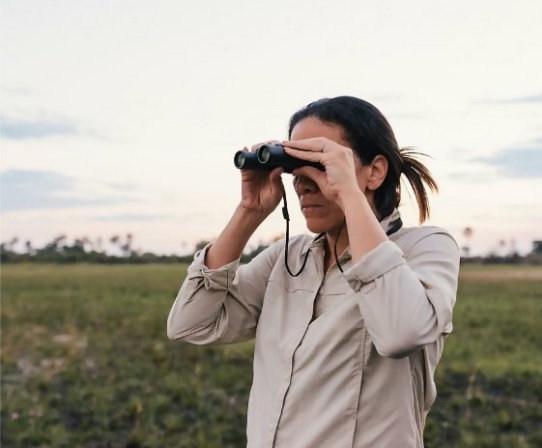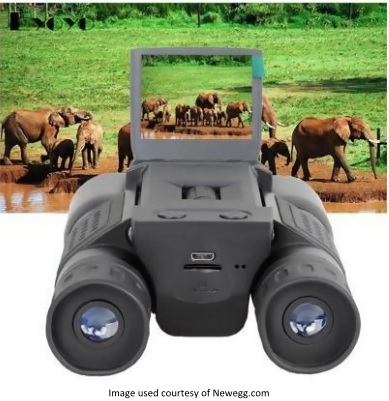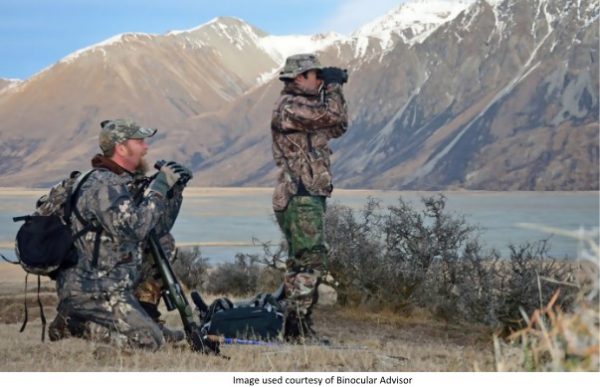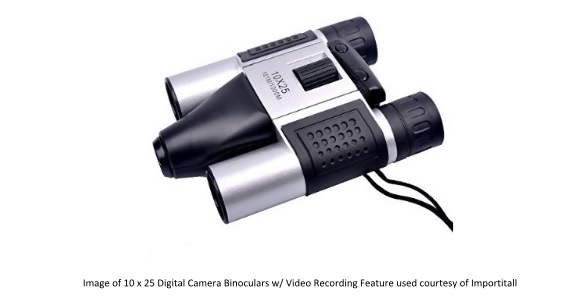How To Hunt Using Digital Camera Binoculars
Category: hunting
Sep 19th, 2019 by Keith Worrall
Modified Sep 19th, 2019 at 10:40 AM
How To Hunt Using Digital Camera Binoculars
It doesn’t matter if you are hunting for game to stock up your freezer or simply wanting to tick a rare bird sighting off your list, you need to know how to hunt using your favorite digital camera binocular.

Image used courtesy of Stocksy United
What Are Digital Camera Binoculars For?
Digital camera binoculars do what it says on the box: they are a digital camera with a pair of binoculars all-in-one. If you have been wishing to yourself for a piece of equipment that allows you to get closer to your subject or target, then you will be pleased to know that digital camera binoculars allow you to view something up close and take a photograph of it too.
This makes digital camera binoculars ideal for creating up-close memories of sporting events, surveillance, bird watching, and hunting. You can purchase specific, purpose-made hunting binoculars and marine binoculars. The majority of these models include the software you will need to view the photographs digitally on your PC. If you want a close-up image of your target when out hunting, a pair of digital camera binoculars is what you need.
How Do Digital Camera Binoculars Work?

Hunters spend a considerable amount of time glassing. These type of binoculars work by magnifying the image enough to make the target easily identifiable. This is perfect for anyone who is after a particular animal, such as a trophy male deer or larger size target. Remember that scent elimination is critical and an essential skill to make hunting successful, particularly when it comes to deer hunting.
As can be seen from the image above, digital camera binoculars can pull double duty when they are used to view exotic animals while on safari, or be used to take the picture of a lifetime. All you have to do is aim and clearly focus the binoculars on the target at which you are looking, press the button and the digital camera part automatically records the image you want.
When you have captured the image you are after, or seen the target you decide you want, you can download it onto your computer right then or later on at home. You will even be able to print out the image and enlarge it to whichever size you like. The higher the quality is of the digital camera built into the binoculars, the better the image will be. You can even take short videos of the subject if you wanted to.
The magnification provided by the binoculars (up to 10X), the better resolution your image will have. This is why digital camera binoculars are something you hear about frequently in bird watching circles; but what can they offer the hunter?
Strategies for Using Digital Camera Binoculars in the Field
The rules for how to use binoculars for hunting stand true for using digital camera binoculars as well.
Don’t be tempted into buying a fancy piece of digital kit to take hunting with you, if it’s so heavy that you can’t bear the weight of it hanging around your neck after a few hours. Use ones that are still light and compact enough to be practical.
Work out what your self-imposed strap + binoculars weight limit is for the day, and never be tempted to buy one above that weight. If you really want to get a heavier model, use it when hunting in a group and take turns wearing and using the digital camera binoculars.

Glassing Does and Don’ts
It never hurts to go over the does and don’ts of glassing when on a hunting trip, especially if you have a newer member in the group.
1. Use Digital Camera Binoculars from a Firm Position
This becomes increasingly important the higher the magnification capabilities go. You can sit with your elbows firmly positioned on your knees, and the digital camera binoculars are set solidly in place. This makes glassing easier and the target image less shaky. You can also lie down on your stomach, and use your elbows as a support.
If you are going to be hunting in difficult terrain, you might want to think about buying a tripod adapter or binocular rest to prevent blurred and shaking images. Many DCBs come with a tripod included in the package.
2. Good Grid Glassing
Never adopt a random viewing pattern when using DCBs. Be systematic and section your view into a grid-like pattern in your mind. Begin at the top left side of the grid and work your vision across to the right. Then move to the middle of the grid, start at the left and move your vision from left to right. Repeat for the lower grid section. You can use the same system for up and down as well.

3. If You See a Possible Target, Don’t Look Away
If you see something far away that could possibly be the flicker of a white tail, don’t take your eyes off it when reaching for your DCBs. Keep staring at the same spot, feel your way to the digital camera binocs around your neck, and lift them to your eyes. This allows the binoculars to find the exact position at which your eyes are looking.
4. Get the Digital Camera Binoculars to Do All the Work
Remember, the more country you cover by glassing, the more legwork you will save yourself. This is why magnification levels are important. If you are working your way toward a target, you will have to adjust the magnification levels on your binoculars as you move closer. This is easy when you are using digital camera binoculars.
Some Digital Camera Terminology Explained
When shopping for DCBs, you will see them described using two numbers, for example, 10 x 25. These 2 numbers refer only to the binocular part. The first number is magnification and the second number is aperture.
The eye relief is expressed in millimeters. This refers to the distance between the binocular lens part and the eye. Pay attention to this if you wear glasses. You should only consider looking at models with eye relief of 15 mm or more. The best eye relief description will be the use of fully-multicoated lenses and Bak-4 prism glass.
Don’t just check for the best magnification, look for the closest focus that the DCBs camera part offers as well. Another important feature when choosing which model to buy is an optical zoom instead of a digital zoom.
The camera part in digital camera binoculars will have its own specifications. These include what resolution is available and the number of megapixels. The higher the resolution and pixel count, the better your images will be.
Some digital camera types come with an instant replay video feature. This allows the users to save up to one minute of the last footage it viewed. This will help other members of the hunting group to further ascertain what the spotter observed.

Other Features of the Top Digital Camera Binoculars for Hunting
As a high-definition, distance-viewing system, the DCBs technology can record and take pictures very easily. This makes it the perfect device for anyone who enjoys interacting on social media or who wants to impart their outdoor activity wisdom to a wider audience.
These two extremely well-established technologies are combined into a variety of basic models and feature variations, and there aren’t that many differences in the products for anyone to be able to say that one has better capabilities on the field than the other. Some are monocular – single chamber telescopes – and some are geared to be more photographic and video camera than others.
Depending on your budget, the price range of DCBs range from $50 to $450 and beyond. They are a nifty addition to any hunter’s gear when used correctly, and will continue to be one of the most advanced tools any hunter can use in the field.